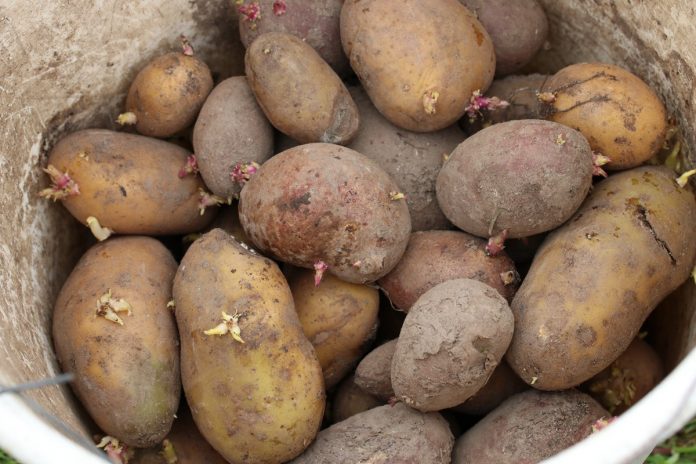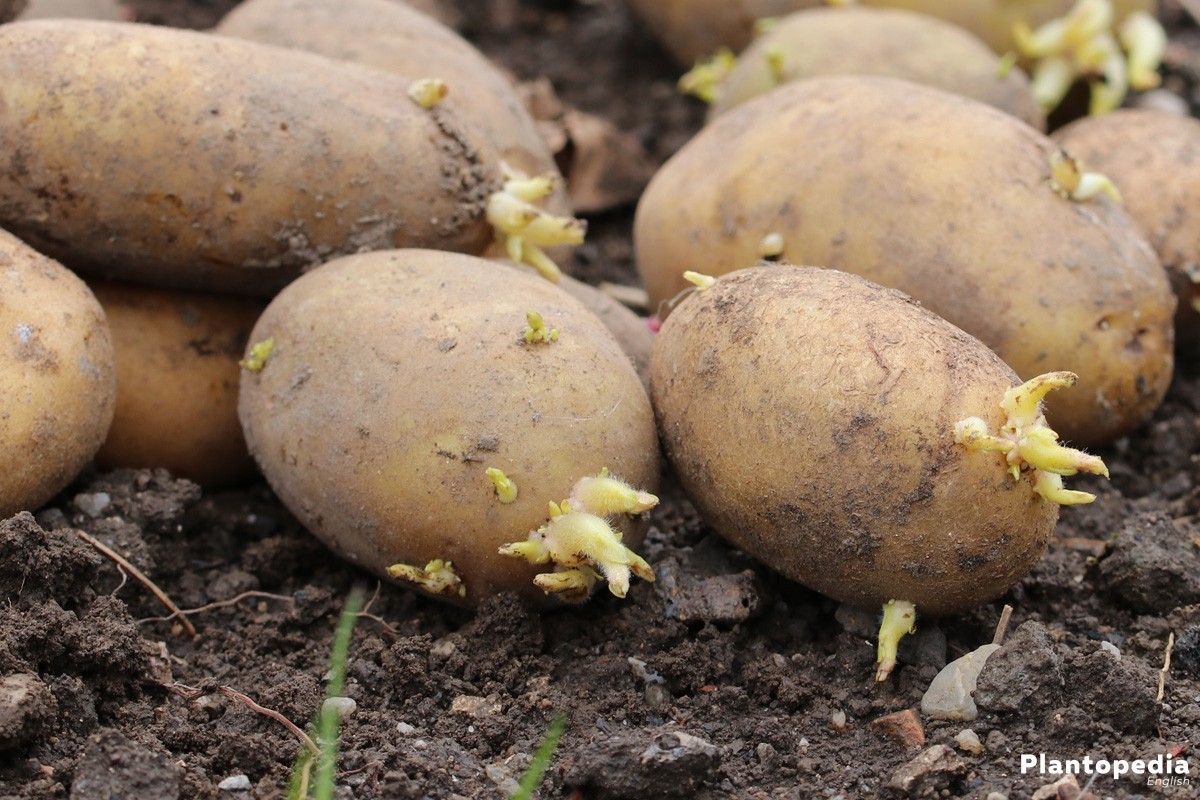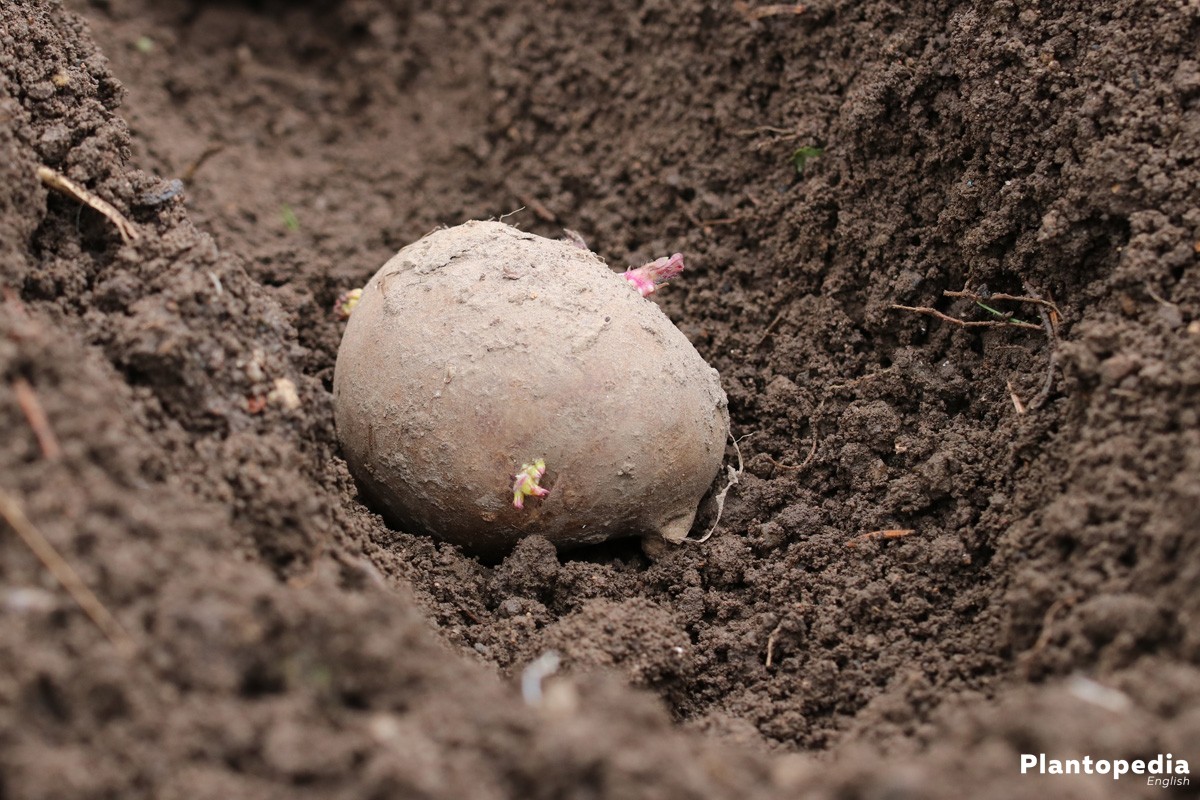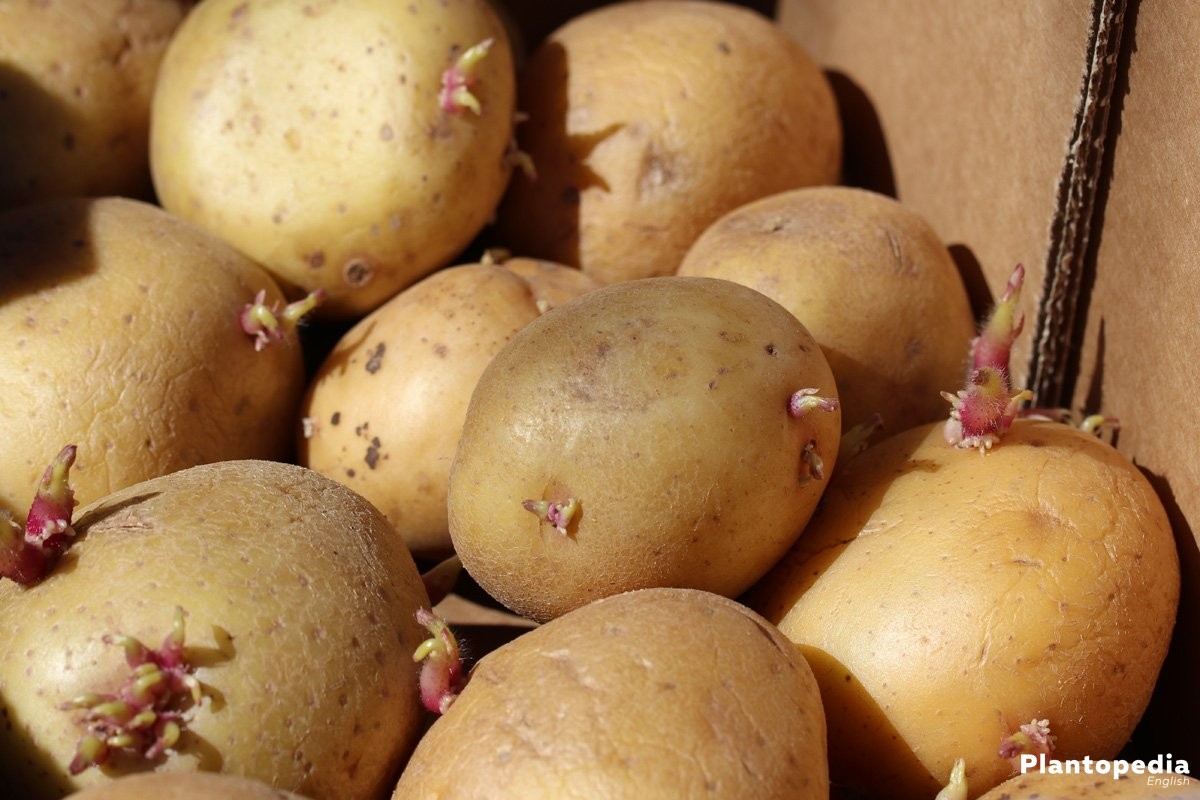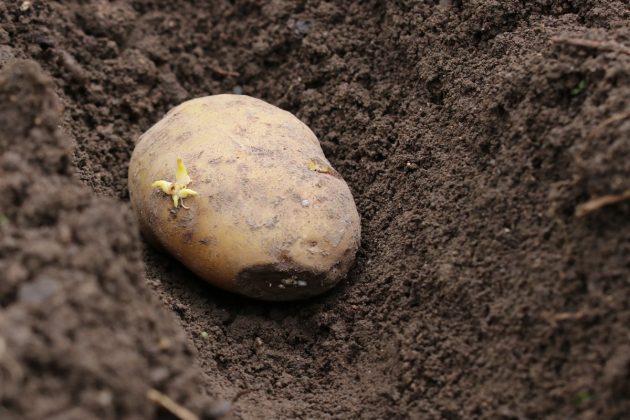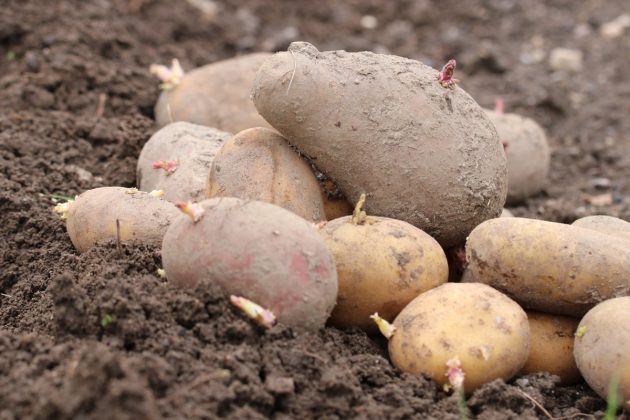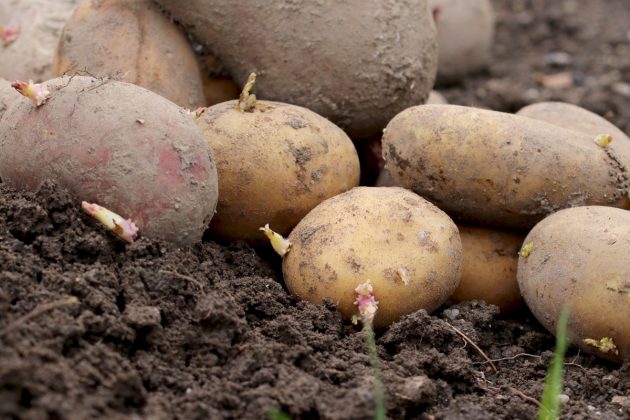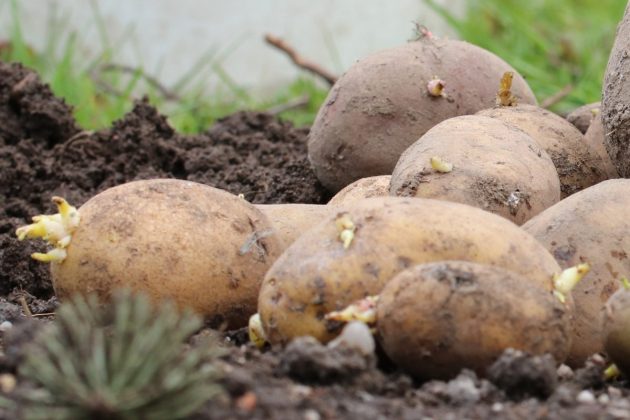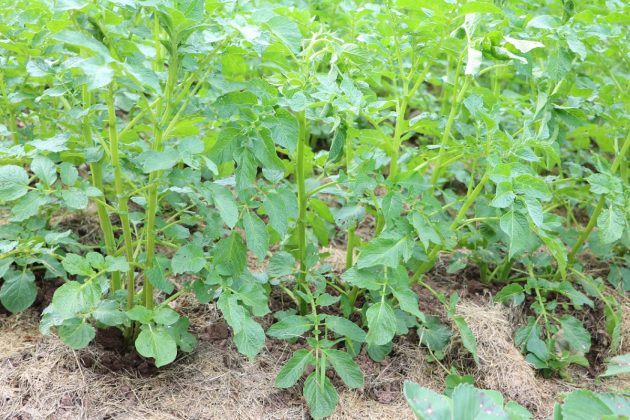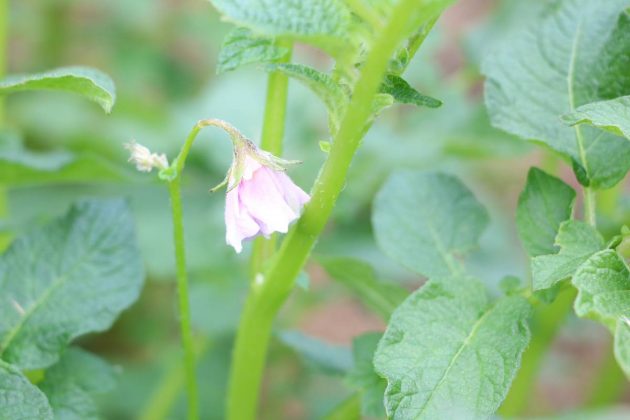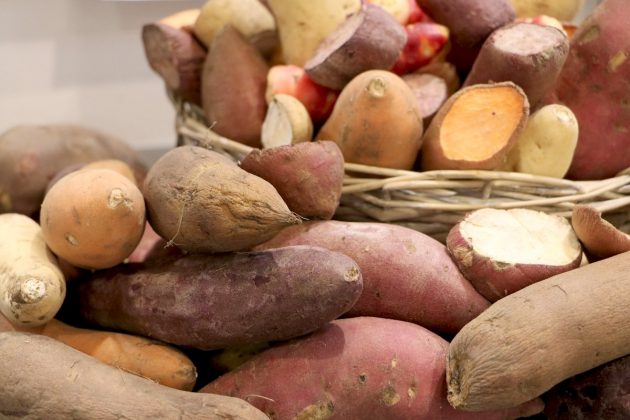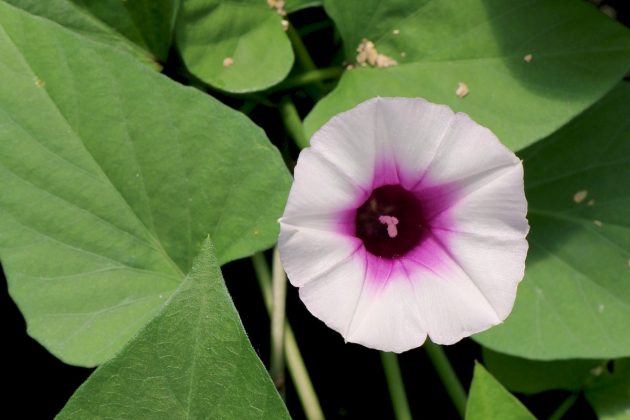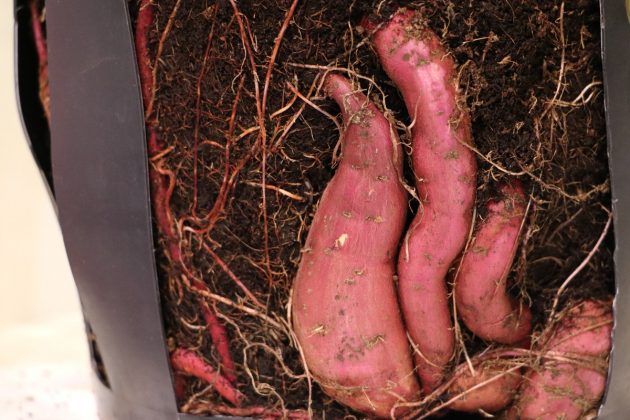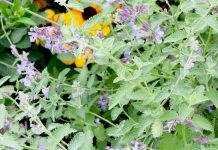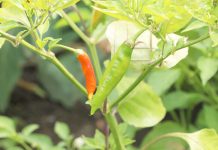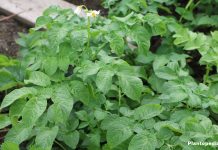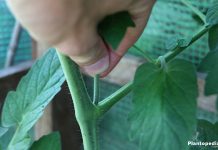Potatoes are still standing very high on the popularity scale of the Germans, especially when they are homegrown and can be harvested by yourself. The harvesting period begins, depending on the potato variety, between the end of May and June up until autumn until the first frosty days occur. The multitude of varieties do not only differ in texture like being waxy or mealy, but also whether they are early or late season potatoes.
Plant Profile
Contents
- 200 Potato varieties
- not only waxy but also mealy cooked
- also early potatoes
- are being harvested from May/June
- potatoes only for consumption
- Medium early potatoes
- Normally from July/August
- Late potatoes
- should be harvested before first frosting occurs
- potatoes can be stored
- when harvesting, keep an eye on the ripening time of the varieties
Potatoes can be served in many various way and are thus still very popular among Germans. That is why more and more hobby gardeners want to cultivate and harvest their own potatoes. This is the point in time where the question arises about the right and best time to harvest potatoes.
This is not that easy to answer however as there are early and late season varieties. It is nevertheless fact that the first early season potatoes are available to be harvested towards the end of May/start of June and that potatoes should not be left in the ground while there is frost.
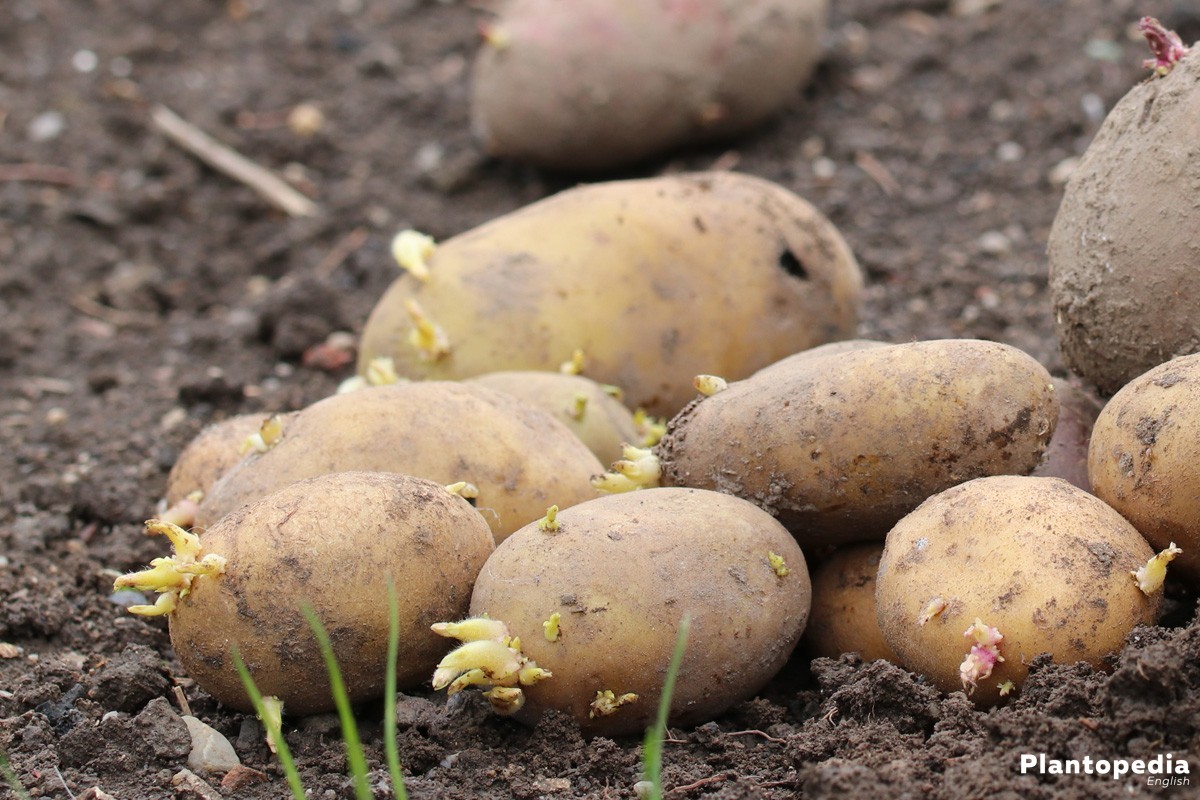
Potatoes are very popular which is why hobby gardeners want to grow the delicious tuber in their garden. However does not possess of one, can cultivate and harvest the potato plants on the balcony. Regarding harvesting time, you are not restricted to one month.
Whoever grows from the start of the year various varieties of potatoes of early and late potatoes, can harvest and enjoy his potatoes from May until the first occurrence of frost. In this concern, information regarding maturing time of the different potato varieties helps and this way one can trace when the potatoes are ripe and ready to be harvested.
Early season potatoes
Early season potatoes are the first potatoes which can be harvested in the year. The ripening time of the delicious fruits lie between 110 – 120 days. The harvest of these potatoes usually begins between the end of June and the start until the middle of July, depending on when they have been placed inside the earth in spring.
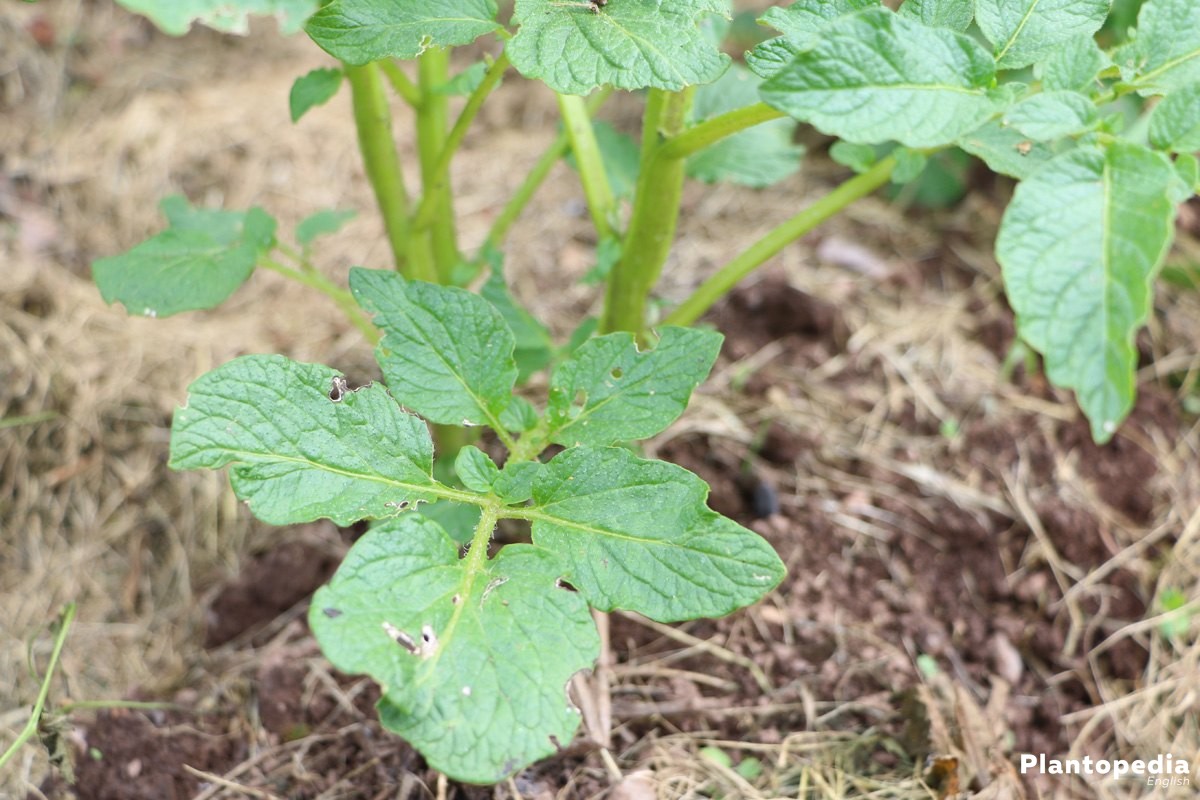
There are additionally very early varieties, which are ready for harvest as soon as 90 to 110 days so that they might be enjoyed as soon as May. You do have to consider however which the early potatoes that they are not usually able to being stored and are solely meant for consumption.
Belonging to the very early and early varieties are:
- Christa (Very early variety)
- Linda (Popular variety, also from the supermarket)
- Blue Swede (Blue Pulp)
- Cilena
- Hansa (Ideal Potato for Fries)
If you want to harvest potatoes which can be consumed throughout the winter, you should pick the middle early potatoes as these as storage potatoes which are often being offered on the market.
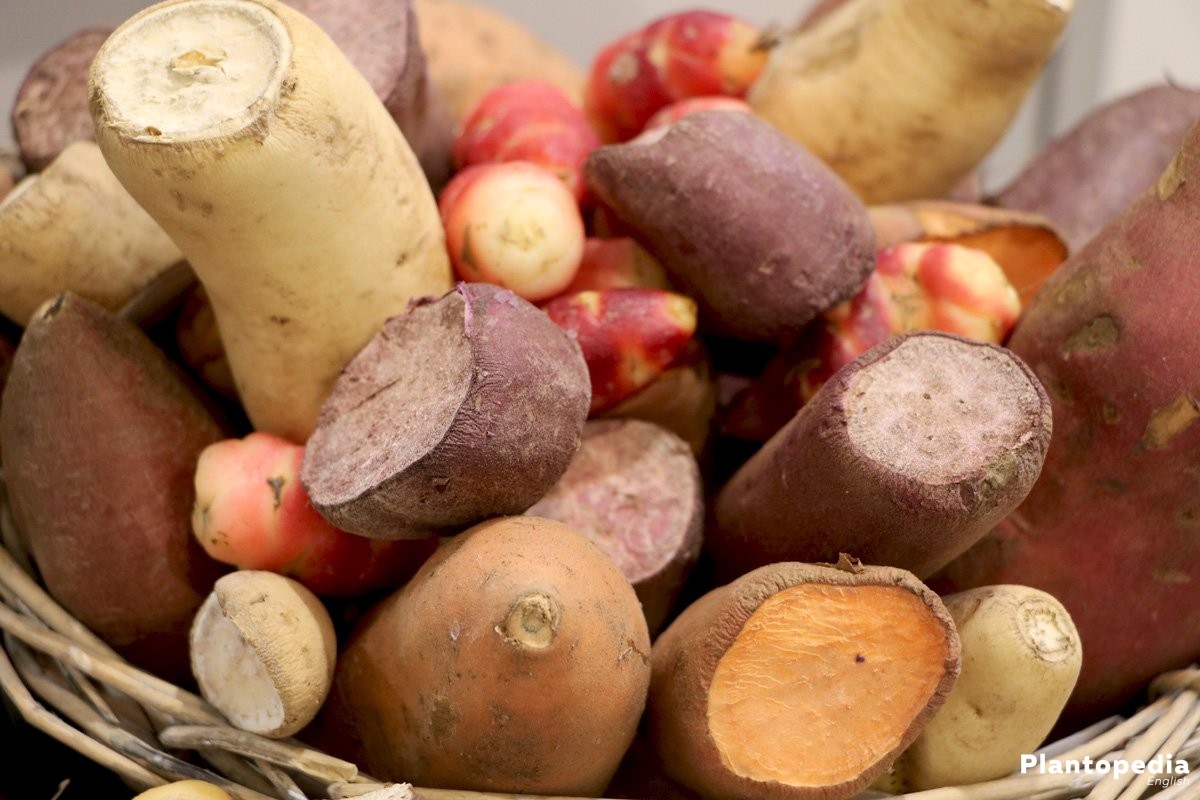
Late potatoes
The harvest of the middle late until the late potatoes should lie in September/October, as these varieties have a ripening time of 140 – 160 days. The potatoes should never be exposed even to one frosty night, as they do not tolerate it and it could damage the harvest. These varieties of the tasty tuber belongs storable potato and can thus be enjoyed throughout the winter until the next spring.
Belonging to the middle late til the late potatoes are:
- Aula (mealy varieties)
- Donella
- Granola (waxy and well storable)
- Datura
- Palma
Ripeness
The right ripening
Whoever adheres to the instruction and awaits the respective ripening time for the varieties, finds the fitting time for the harvesting of his potatoes in a swift manner. There are some factors, which let the potatoes grow and ripen somewhat faster or slower. The potatoes mature faster in a very sunny and warm spring than in a rainy and relatively cold one. That is why one should take a focus on the following aspects towards the end of ripening time in order to determine the right harvesting time.
- primarily keep a focus on the ripening time
- mark the harvesting date in a calendar at the time of planting
- the herb growing above ground should be withered
- wait approximately three weeks after the death of the leafs
- check, whether the peel is hard
- it should be able to be rubbed off with the thumb
- they are otherwise not yet consumable
- absolutely before the first frost
- early potatoes for immediate consumption can be harvested with green herbs
If one would plant the late varieties around April would face a ripening time lasting until the end of September/start of October. They should be taken out of the ground at that time at the latest as one should reckon with nightly ground frost in late October in some areas which could harm the potatoes which are still inside the ground. With early and middle potatoes you can take yourself some more time for the extraction after the initial date of ripening.

Harvest
Harvest when needed
Especially with early potatoes, one can harvest when needed. As there is no danger of nightly frost looming, these potato varieties can stay as long inside the ground, until they are utilized. As early potatoes can already be harvested with green herbs, the harvesting period is being delayed by some weeks.
It makes sense to let the storable potatoes inside the ground until they are being able to be processed. One should take out the big specimens, as this way the smaller potatoes can continue to grow. In tiny gardens or small planting bags on the balcony it is an especially good solution to profit from the tasty tubers over a longer period of time.
If you are unsure whether the potato is mature enough to be consumed, you can take out one tuber and test it. This way you can identify whether the tasty fruits are already consumable or whether they should better remain inside the ground for a few days longer.
Tool
Required garden tools
In order not to harm the potatoes during the harvest one requires the proper garden tools in order to dig them out. Whoever only serves a small field or cultivates the potatoes on the balcony can take them out with his hands with no problems as the process in itself is very careful in nature. In the case of a bigger field one can find the proper support with garden tools.
One should primarily utilize a digging fork as it is being used for the potato harvest for centuries. For easier digging, one can use a potato hoe which as well has a long tradition of being used for this purpose. The hoe is better used for the search as well. Ultimately, the spade offers a great possibility as you can take the entire potato plant with the attached tubers simultaneously out of the ground.
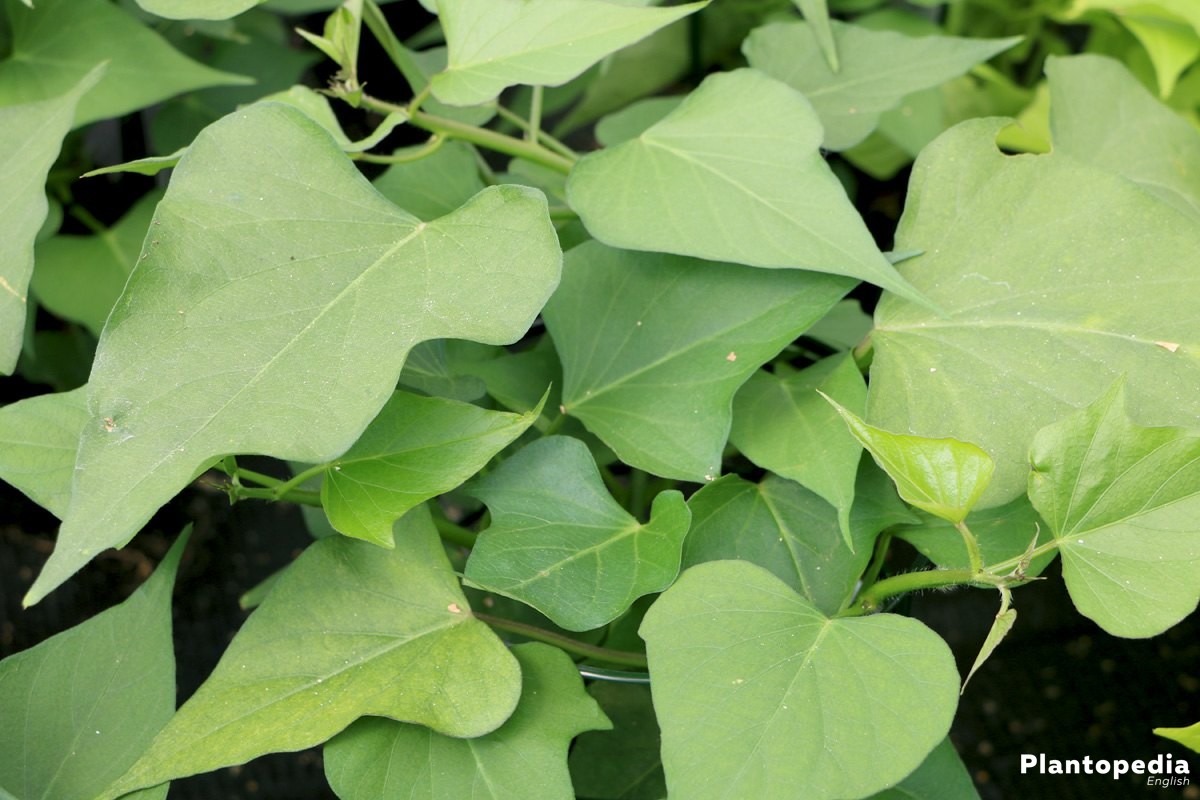
Which tool you should select is also dependent whether only single potatoes for direct consumption should be used or a whole field is being harvested.
The harvesting process
The harvest of the entire bed for storage is conducted, when the fitting time has been selected.
Determining the time
One harvests, when the ripening time of the respectively set up potato variety is finished. The plants are commencing its natural resting period about three months after the planting. This is being indicated by the upper green tips changing their color to yellow and afterwards taking a brown hue before they eventually die off. It is now time to take the tubers out of the earth.
If you however recognize a yellow tone developing during this time until it withers you should see it as a sign for herb rotting which should be handled swiftly by immediately taking the tuber out of the earth so that the rotting is not being transferred onto the potato fruits.
One otherwise proceeds as follows when harvesting:
- choose a sunny or at least dry day
- the next few days should not be dry as well
- dig up a shrub for testing purposes
- test the peel on its hardness
- it can not be rubbed off
- the tuber is separating easily from the tuber shoots
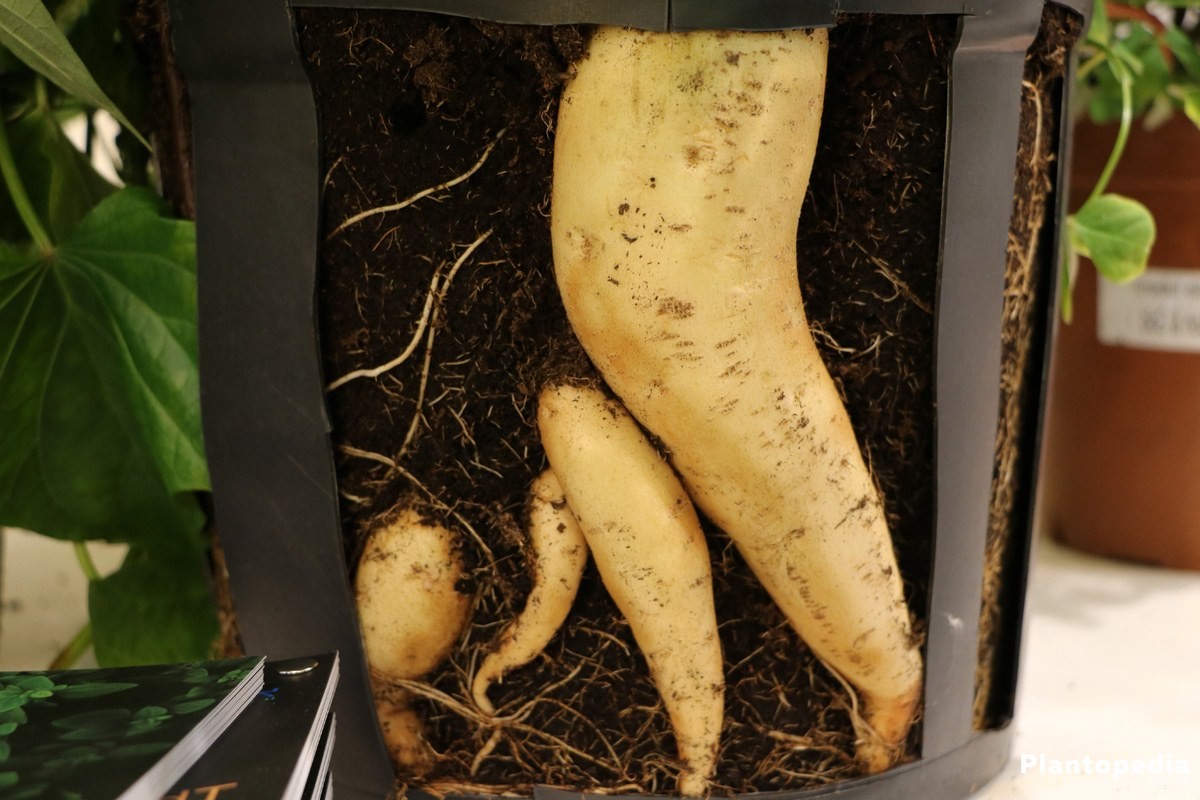
This how you should dig
The earth is being loosened with a digging fork when it has been determined that the potatoes are ripe for harvesting. The single potatoes are now being dug up with a fork or alternatively a spade out of the earth. It should then be pulled out from the lower stem with the hands from the earth. If there are still tubers on the roots, they are being pulled off with it.
It is rarely the case, that all potatoes are still hanging on the root and this way one pulls the whole ground with it. That is why one must then search for potatoes inside the hole with the digging fork, the hoe or the bare hands. These lie below the ground. If the whole bed is not being harvested but only a certain demanded amount, then the specimens can remain inside the earth for a few weeks.
Light exposure should be avoided, which is why there should be a proper covering of with earth. The extracted potatoes will now stay for one or two days above the bed in order for them to fully dry.
This is how it is done:
- extracted potatoes should be dried on the beds afterwards
- generously spread them on the bed
- the tubers still hanging on the upper plant parts and the roots should be taken of
- collect the tubers when the earth is completely dry
- carefully remove the coarse earth
- fill the potatoes in a bucket or a basket
- keep an eye out for damages
- respectively sort the tubers
- the undamaged ones can be stored
- the damaged ones should be designated for immediate consumption
Store or immediately consume
Whoever wants to enjoy homegrown potatoes the whole year over, should be smart from the time of planting. That is why early potatoes are only meant for direct consumption as they are very juicy. With a storing they would start sprouting after two weeks at the most. That is why potatoes should be stored for two weeks at the most after harvesting. Whoever keeps an eye out for different periods when planting the early potatoes, can harvest them longer in a fresh manner.
The middle early and late potatoes are all generally well storable, they do however also depend upon the right time for harvesting. If the potatoes have been harvested too soon, the peel will not be hard enough for storage and rotting could occur. These varieties are naturally well suited for an immediate consumption
Storing
This is hot is being stored
One should keep an eye on several aspects when storing in order for the potatoes to stay edible for a long time. In this regard it is important that only undamaged tubers are being stored. All of the others should be immediately consumed.
The ideal storing looks like the following:
- frost sheltered, cool dark and airy room
- a basement or a storage room is ideal
- should be capable of being aired from the sides
- recommended are temperatures between 4 and 10 degrees Celsius
- meticulously spread the potatoes on the ground which is covered with wooden strips
- if there is less space available, use potato boxes
- these boxes are available in stores
- one should not miss the opportunity to use them
- do not store beside fruit like apples
- the ripening gas ethylene spoils the potatoes

